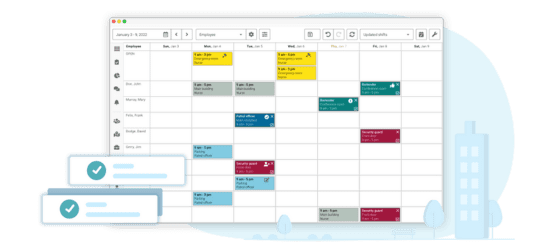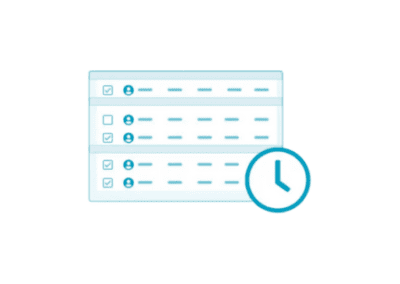Imagine you are a supervisor. You need to create and communicate a schedule for a group of hourly shift workers every week. Each employee has their own availability, work preferences, and time-off requests. In addition, you also need to account for any last-minute changes. Creating a schedule to fit all employees and suit your business needs can be a time-consuming and daunting task. Enter automated employee scheduling.
What is automated employee scheduling?
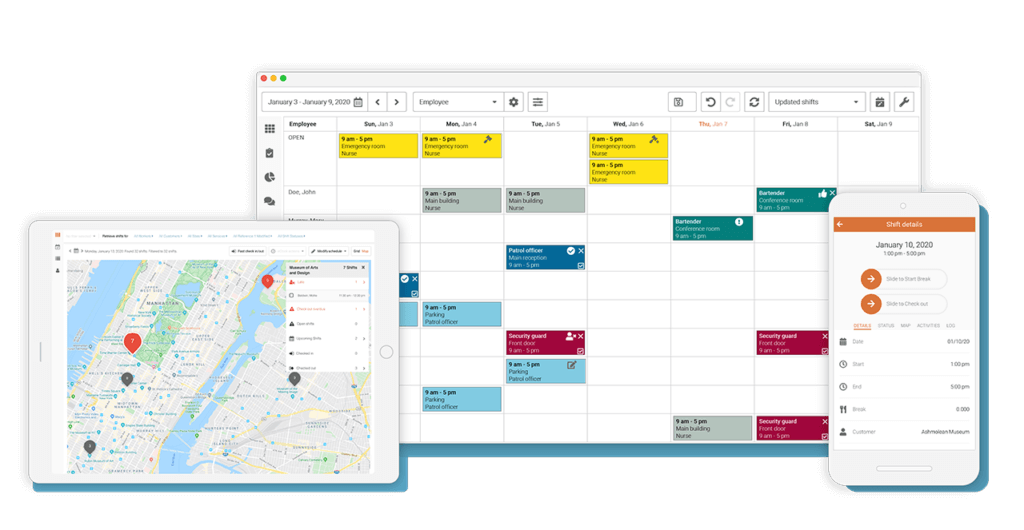
Automated employee scheduling is a digital way of managing a company’s workforce. It’s a powerful tool that decreases your reliance on manual scheduling using basic templates such as Excel. Managers and executives have limited real-time visibility into scheduling and reporting and this makes it difficult to mitigate potential issues and make proactive changes and informed decisions. But what kind of change should they be prepared for?
The workforce landscape continues to evolve, which is causing managers to come under additional pressure. With fluctuating demand and increased absenteeism, employee scheduling is by nature, unpredictable.
Amongst all of the chaos, the growth of automated employee scheduling has given businesses a platform to continuously schedule with competence. Manual processes don’t carry that kind of reliability anymore. Let’s look at why.
Why manual processes are bad for business
There once was a time when manual processes were efficient enough for your scheduling needs. But managers are slowly realizing that the time they’re spending and the costly errors are adding up at the company’s expense. Let’s explore the ways it can be bad for business.
HUMAN ERROR
The most significant reason why businesses lean towards automated employee scheduling software is that manual processes are susceptible to human error. Nobody wants inaccurate data leading to an incompetent schedule.
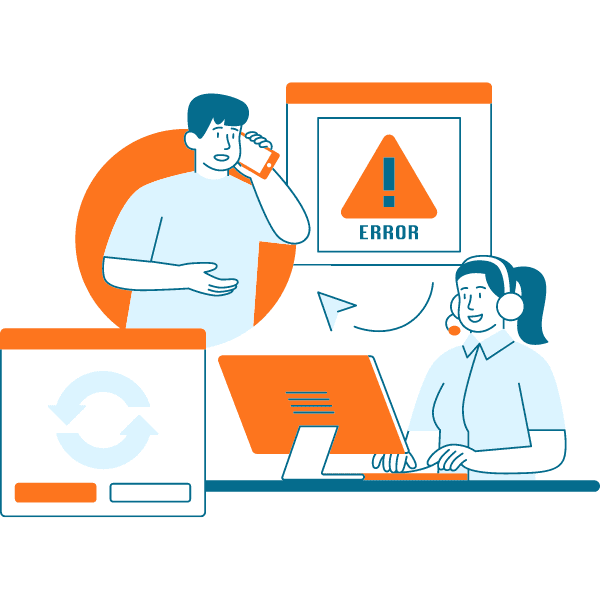
First of all, it can lead to shifts being under/overstaff which can have a direct impact on your customers. It can also result in low employee morale and increase the likelihood of a high employee turnover. It can also have a huge impact on the trust and reliability your clients have in your business.
DISENGAGED EMPLOYEES
Manually processing data is no fun. And reading manually processed data is not much fun either. It can be boring and tedious for the creator. And can be difficult to access for those needing to read the schedule.
It can lead to an overcomplicated schedule process that leaves employees feeling disengaged with their job. A new and exciting automated employee scheduling software can relight their fire. Most of us know by now that employee engagement is directly linked to productivity.
COMPLIANCE ISSUES
When it comes to shift work, there are labor and union regulations that need to be considered every single time that a schedule is created. If you’re scheduling manually, you run the risk of missing a critical rest period that can create issues down the line.
Having this pressure lie solely in the hands of the scheduler often leads to more time being spent on schedule creation than necessary. The last thing any business wants or needs is a lawsuit on their hands for lack of compliance. A
5 Benefits of Automated Employee Scheduling
So now that we’ve discovered why manual processing can be bad for business, let’s dive into automated employee scheduling, how it can streamline your scheduling process, and the benefits of it for your business.
INCREASED EFFICIENCY – SAVE TIME AND MONEY

As the saying goes, “time is money”. So, put down the pen and paper.
Manually creating your schedule is probably taking up a ton of your time. By switching to automated employee scheduling, you can cut the time it takes to create your schedule by up to 95%!! With automated scheduling, supervisors can see exactly who is available, who is on paid leave, and which employees have the right certifications for the shift.
To further save time, Celayix software has tools like autofill and Celayix AI which can fill an entire schedule for you based on your own business rules. Reproducing a schedule every week or month can take a matter of minutes using a shift template.
For a lot of our customers, they are scheduling employees across multiple locations. Typically, this is done manually for each location. However, Celayix automatic scheduler gives schedulers the ability to cover all locations from one central, online schedule. Employees can be scheduled at any location at any time, and schedulers can rest assured knowing employees aren’t scheduled at different locations at the same time… more on that later!
The additional time you save can be used on other business priorities. This is often the first benefit that our clients experience after switching to Celayix:
Now, it takes me just one day to create schedules compated to nearly two weeks before. It’s like a dream.
Bill Looker, Admissions Staffing Manager, Portland5 Centers for Arts
Dealing with schedule changes is part and parcel of the business process. But using the best methods to deal with change is what separates the best from the rest. Let’s look at how you can do that.
FEWER SCHEDULING CONFLICTS
Mistakes happen, particularly where human error is a possibility. With manual scheduling, these errors can result in staff being double-booked, shifts being under/overstaffed, and of course, shifts being missed altogether. However, with automated scheduling, these errors are far less likely to occur.
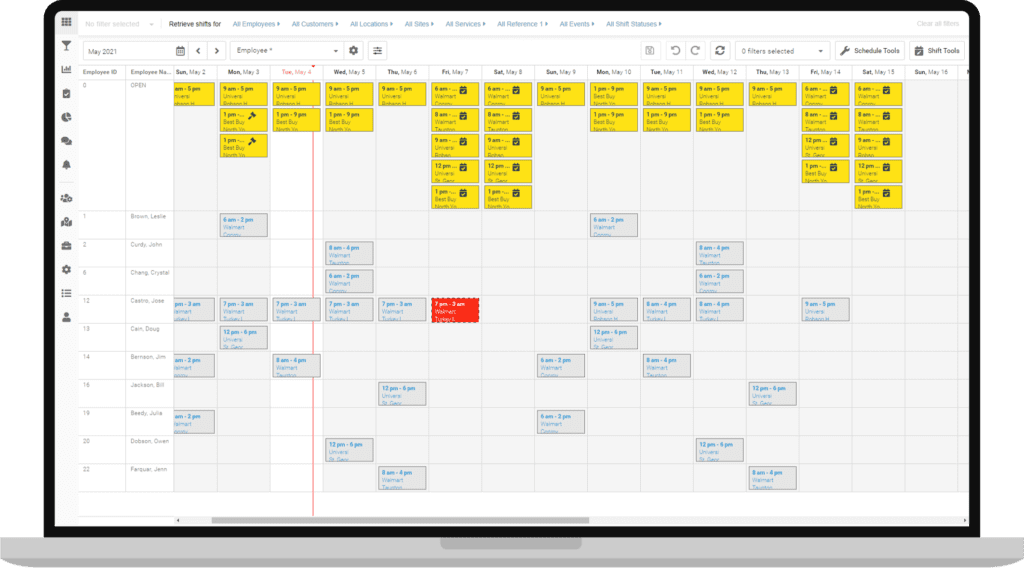
Generally, the software will alert you of any errors like double booking a staff member. The visual element of our scheduling software also allows you to quickly spot any shifts that have been missed. Celayix also allows you to use templates and labor forecasting to ensure you assign the right number of staff to certain shifts – creating the optimal schedule for that week. Our mobile app also enables employees to view their schedule anywhere, anytime, resulting in fewer missed shifts.
Along with errors directly related to the schedule that can impact customers/clients, automated scheduling also reduces errors in billing and payroll. Automated software integrates with your other existing software such as billing and payroll, which reduces the likelihood of human error in these areas. Data can be seamlessly transferred between the providers, making the entire process much smoother.
REAL TIME NOTIFICATIONS FOR MANAGERS AND EMPLOYEES
Receiving alerts in real-time is invaluable to managers becoming aware of change. If someone checks in late, or doesn’t show up to a shift, your alerts will notify you. This becomes particularly useful if you need to fill a shift last minute.
Instead of texting all your employees and choosing the fastest responder to fill the void, you can take this as an opportunity to utilize the find replacement tool. This will provide a list of the most qualified and available employees to fill the void.
Once there was a time employees would have to hunt down a printed piece of paper or check a chart on the wall. Automated employee scheduling however, allows them to view the most current version of their schedule online. This design gives employees the autonomy they need to feel in control of their schedule.
This gives them the flexibility they need for a healthy work-life balance and can help to prevent them from burning out. Whenever an employee is scheduled, the shifts will present in real-time inside of their employee scheduling apps. They will also be notified instantly if for any reason there is a change to the schedule that affects their shifts.
HAPPIER EMPLOYEES & LOWER EMPLOYEE TURNOVER
Harvard Business Review’s research found that 83% of employees said if they had more control over their schedule, they’d be more likely to stay in their job. With that in mind, Celayix automated employee scheduling software allows employees to input their availability. This data is then used when the scheduler is assigning shifts using any of our automated tools such as autofill or find replacement.
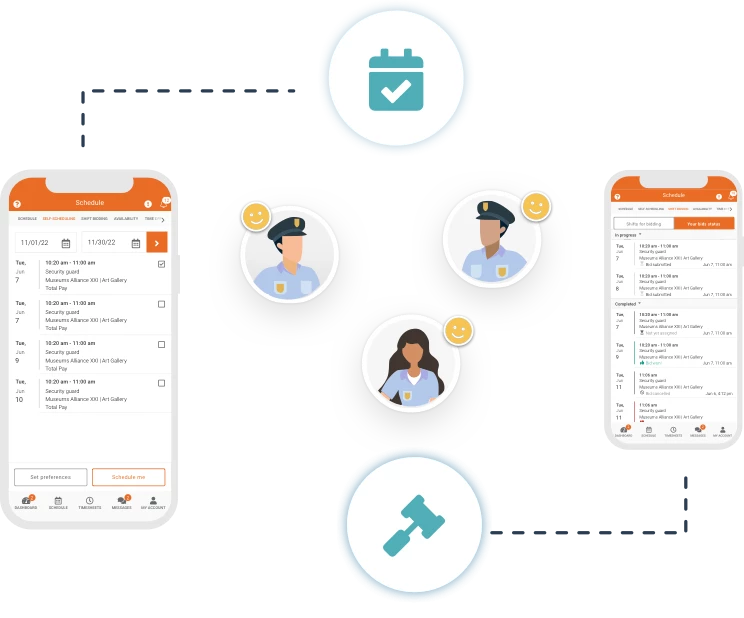
Employees having control over their schedule helps to boost their morale and makes them feel more engaged with a business. There should be great emphasis put on how scheduling can make a huge difference to how an employee feels.
So, not only are your employees happier with automated employee scheduling, but your company should now experience lower employee turnover. Many businesses have struggled to retain employees due to the inconvenience of their scheduling processes and the lack of flexibility. Poor scheduling has long resulted in workplace conflict, lower productivity and an increase in absenteeism.
An unpredictable schedule is directly linked to unhappy employees, reported The Business Journals. Last minute text messages to inform an employee that their shift starts in 30 minutes is not going to be received well. Changes at short notice can become difficult to manage for anyone. Especially those who have many responsibilities outside of their workplace.
Integrating automated employee scheduling will give an additional layer of control and make their employees feel more engaged. And it’s important for any manager to realize that an engaged workforce will reflect on their customers.
REDUCED OVERTIME SPEND
Manual schedulers often turn to overtime as a solution to fill gaps in their work schedule. This can be an effective short-term solution, but excessive overtime can be a killer. It results in burnt-out employees, budgets being over-spent, and unfair shift distribution. Automated employee scheduling can be used to eliminate all unnecessary overtime from your schedule.
Celayix uses a rules-based engine to create schedules, which is driven by business rules created by the scheduler. The most common application of these rules is to avoid scheduling overtime. These rules have helped some of our clients save up to $100,000 in overtime;
“Within the year, we were able to eliminate about $100,000 in overtime, essentially all of the avoidable overtime within our organization.”HR Manager, Company name confidential
HAPPIER CUSTOMERS

So how does automated employee scheduling lead to happier customers? If you spend less time dealing with scheduling issues you’ll have more time to focus on customers and the best ways to keep them happy. But also, if your employees are happy, they’ll be more productive. This will reflect in the way they interact with and handle work for any of your customers.
A reduction in errors and utilization of your best resources will ensure that your schedule is coherent as can be. So if you’re scheduling shift work for a site, your clients can be sure they’re getting the most capable employees to do the job. And if any changes are required, you can simply enter your employee scheduling software and edit your schedule on the spot. Scheduling has never been so easy.
ARTIFICIAL INTELLIGENCE
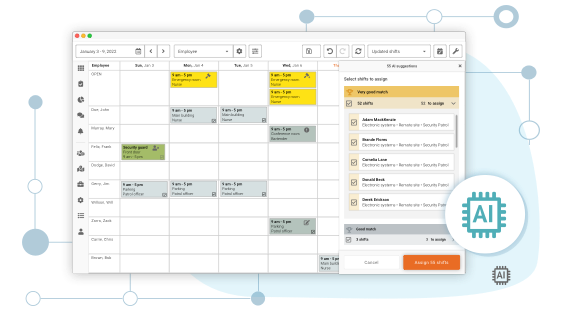
Celayix uses artificial intelligence to analyze employee data and create optimized schedules. The software can learn from past scheduling decisions and use this information to make more informed scheduling decisions in the future. Not only does our artificial intelligence help you create optimised schedules, it also helps you create fair, and unbiased schedules. Without an automatic scheduler, employees may feel that more favourable hours are given to other employees. AI totally eliminates bias and distributes shifts in a way that best suits the business and your customers.
RULE-BASED ENGINE
Celayix also uses a rule-based engine to ensure that schedules are compliant with labor laws and other business rules. The software can enforce rules such as maximum working hours, overtime restrictions, and minimum rest periods, ensuring that employees are fairly and legally scheduled. This reduces the mental workload on schedulers who often overlook overtime and other factors when creating schedules. Our system can generate alerts when overtime is assigned and even suggest alternative employees. We’ve helped customers save over $100,000 in overtime with our automatic scheduler!
MOBILE APP
Celayix has a mobile app that allows employees to view their schedules, request time off, and swap shifts with their colleagues. The app also allows managers to communicate with employees and approve time-off requests, improving communication and reducing scheduling conflicts. One of the main benefits of the Celayix mobile app is that it can automatically alert employees of schedule changes! Handling schedule changes manually leads to missed shifts and other conflicts. With automated notifications, employees have full visibility at all times!
TIME AND ATTENDANCE TRACKING
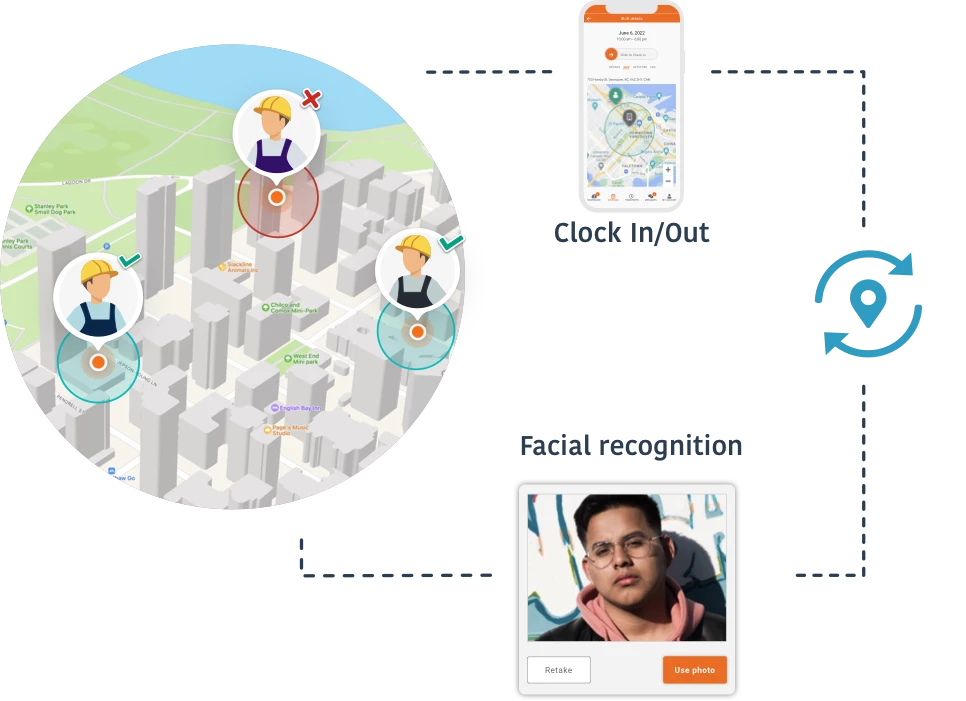
Celayix also offers time and attendance tracking, allowing managers to monitor employee attendance and punctuality. This feature can help businesses reduce labor costs by identifying and addressing attendance issues early on. The beauty of having integrated, automated time and attendance is having attendance matched hours! Your schedule will be updated with actual hours worked. This allows you to ensure payroll is accurate and error free, in as little time as possible!
The importance of automated employee scheduling
Automated employee scheduling has paved the way for businesses to schedule in the most efficient way possible. It’s created an intent focus on keeping both the manager and the employee happy. The manager’s scheduling becomes far more reliable and efficient, while making it more streamlined with other business processes such as payroll.
Employees can now use their employee scheduling app to gain more autonomy over their schedule, while taking advantage of the real-time data which discloses the details of their shifts. Providing your employees with a fair and transparent scheduling environment will go a long way toward improving morale, mental health, and, as a result, engagement and retention.
By leveraging intelligent automation in scheduling, a business is empowering their managers and employees to operate at their highest possible capability. If you’d like to see how Celayix employee scheduling software can help you achieve the benefits above, contact us today!


